What is Restless Legs Syndrome?
Restless Legs Syndrome (RLS), also known as Willis-Ekbom Disease, is a disorder of the nervous system that causes an irresistible urge to move one’s legs. The severity of Restless Legs Syndrome can range from mild to intolerable, and the symptoms can come and go over time.
Most people afflicted with restless legs syndrome report worsened symptoms in the evening and night.
In many cases, symptoms can significantly disrupt sleep, causing exhaustion and daytime sleepiness.
Untreated, Restless Legs Syndrome can strongly impact one’s mood, ability to concentrate, and subsequently have an adverse effect on one’s job, school performance, and personal relationships. Restless Legs Syndrome can progressively increase in severity, reaching the point that it can decrease work productivity and trigger depression and anxiety.
Due to its impact on the quality of sleep and it’s increased intensity at night, Restless Legs Syndrome is considered a sleep disorder and can be diagnosed and treated at a sleep center.
Who does Restless Legs Syndrome Affect?
Approximately 1 in 10 Americans may suffer from Restless Legs Syndrome. RLS affects both men and women, but is more prevalent among women. Though Restless Legs Syndrome may affect children, the condition typically affects adults middle-aged or older.
Causes of Restless Legs Syndrome
There is evidence that genetics play a role in the development of Restless Legs Syndrome. Almost 50 percent of RLS sufferers have a family member with the condition.
In most other cases, it can be challenging to determine the cause of Restless Legs Syndrome. Other associated factors include:
Chronic conditions: Certain chronic diseases and conditions such as iron deficiency, Parkinson’s, kidney failure, diabetes, and peripheral neuropathy often include symptoms of Restless Leg Syndrome.
Pregnancy: During pregnancy, some women may experience Restless Leg Syndrome, especially in the last trimester.
Use of alcohol, nicotine, or caffeine: Use or abuse of alcohol, nicotine, or caffeine may trigger or worsen symptoms of RLS.
Sleep deprivation: Along with specific sleep-related conditions such as sleep apnea, sleep deprivation may trigger or worsen symptoms.
What are the Symptoms of Restless Legs Syndrome?
Other Symptoms include:
Sensations in the legs that begin after being at rest
Relief of sensations by movement: stretching, jiggling, pacing, or working
Worsening of symptoms at night
Nighttime leg twitching
People with restless legs syndrome report the following sensations in
their lower limbs:
Crawling
Creeping
Pulling
Throbbing
Aching
Itching
At times, it can be challenging for a sufferer to fully describe the sensations, but the end result is the same- Restless Leg Syndrome sufferers feel a consistent desire to move their legs.
experiencing any Restless Leg Syndrome RELATED issues?
How do You Diagnose Restless Legs Syndrome?
At Pulmonary Associates of Brandon, our sleep specialists are very familiar with the symptoms and frustrations caused by Restless Legs Syndrome and we are eager to assist you in developing a treatment plan.
Diagnosis of Restless Legs Syndrome will begin with a description of your symptoms and analysis of your full medical history. If anyone in your family has or had RLS, that information should be shared with your sleep specialist.
Your sleep specialist will likely ask the following questions, based on criteria established by the International Restless Legs Syndrome Study Group.
Responses of “yes” to these questions will confirm a Restless Legs Syndrome diagnosis:
You have a strong, often irresistible urge to move your legs, usually accompanied by uncomfortable sensations typically described as crawling, creeping, cramping, tingling or pulling.
Your symptoms start or get worse when you're resting, such as sitting or lying down.
Your symptoms are partially or temporarily relieved by activity, such as walking or stretching.
Your symptoms are worse at night.
Symptoms can't be explained solely by a known medical or behavioral condition.
Once your Restless Legs Syndrome has been confirmed, your sleep specialist will conduct a physical and a neurological exam, and may take blood samples as a means of identifying pre-existing conditions. For example, iron deficiency is a well-known contributor to the development of RLS.
If no pre-existing conditions are identified, your sleep specialist may recommend an overnight stay at our sleep clinic where your sleep can be observed for potential sleep abnormalities such as sleep apnea.
Treatments for Restless Legs Syndrome
If an underlying condition has been diagnosed, treatment for that condition will greatly relieve symptoms of Restless Legs Syndrome. In cases of iron deficiency, iron supplements can rectify or at least minimize the symptoms of Restless Legs Syndrome. We advise not taking iron supplements without having your blood-iron levels checked by your doctor or sleep specialist.
In instances in which no pre-existing condition has been identified, our treatment plans focus on lifestyle changes, and medications. As there is no cure for RLS, treatment is targeted at easing symptoms.
Prescription Medications for Restless leg syndrome:
Dopamine agonists
Drugs that impact calcium channels
Opioids
Benzodiazepines
You may try several medications before you and your sleep specialist identify the perfect medication or combination of medications for your treatment.
Lifestyle changes for restless leg syndrome:
Beginning a regular exercise program
Establishing regular sleep patterns
Eliminating caffeine, alcohol, and tobacco
Leg massages
Hot baths or heating pads or ice packs applied to the leg
Relaxis: A vibrating pad
Experiencing any Restless Leg Syndrome RELATED issues?
Let us help You! Just fill out this form and we will contact you to schedule an appointment:
